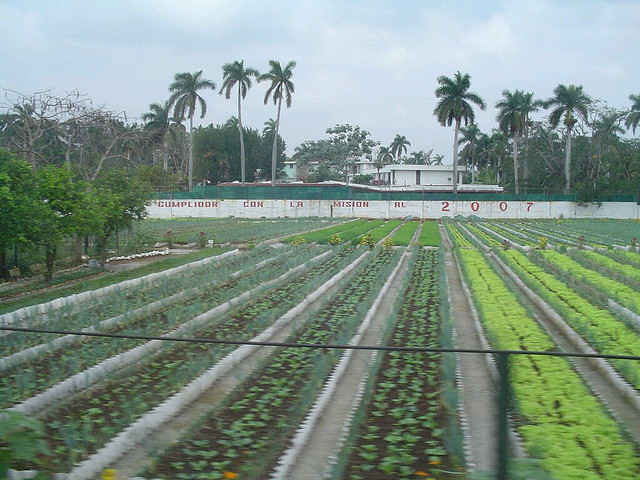Podcast: Play in new window | Download
Subscribe: RSS

By 2006, when this picture was taken, urban farms such as this converted soccer field in the middle of Havana were supplying the city with 90% of its produce while using virtually no petroleum products. (Photo by Dave Williams/Flickr)
[Please click here for a 2019 update on this story]
After 50 years of pretending that Cuba is not there, the United States government this year admitted that, well, it is still there (even Fidel Castro is still there) and we may as well deal with it. This is seen in some quarters as progress. But it is widely assumed that American business will swoop in there and upgrade them from their 1967 DeSoto cars, re-mechanize their agriculture, build fast-food restaurants, and stamp out Communism. It’s what we do.
What we should do is recognize that Cuba confronted in 1991 precisely the kind of Apocalypse that looms before us today — the sudden loss of external inputs to the economy — things such as oil, heavy equipment, cars, and did we mention oil? — and handled it. We have more to learn from them than there is likely time to learn before we are in the soup, but we should do the best we can, because there is no better example in the world for meeting and besting such a crisis. Continue reading